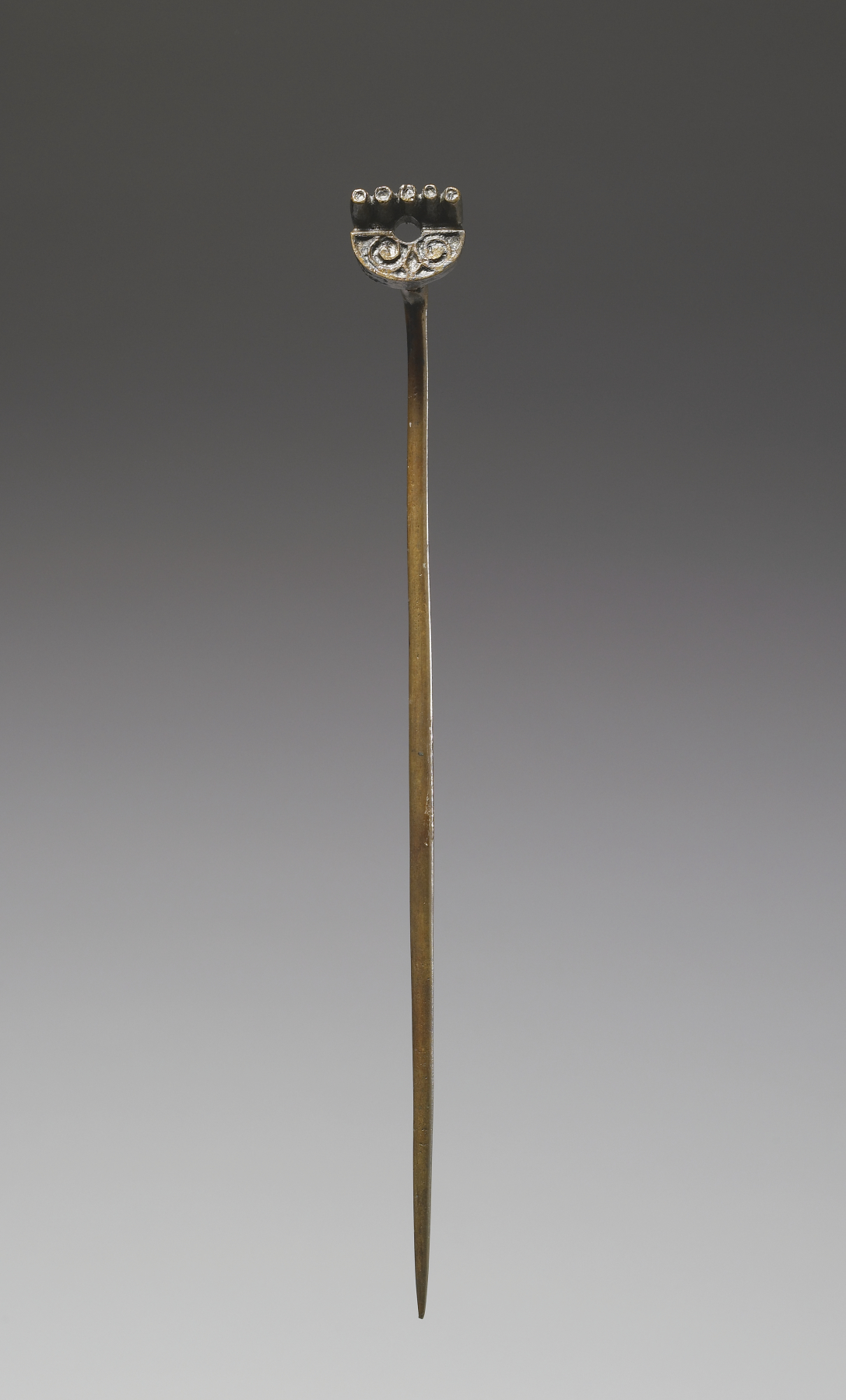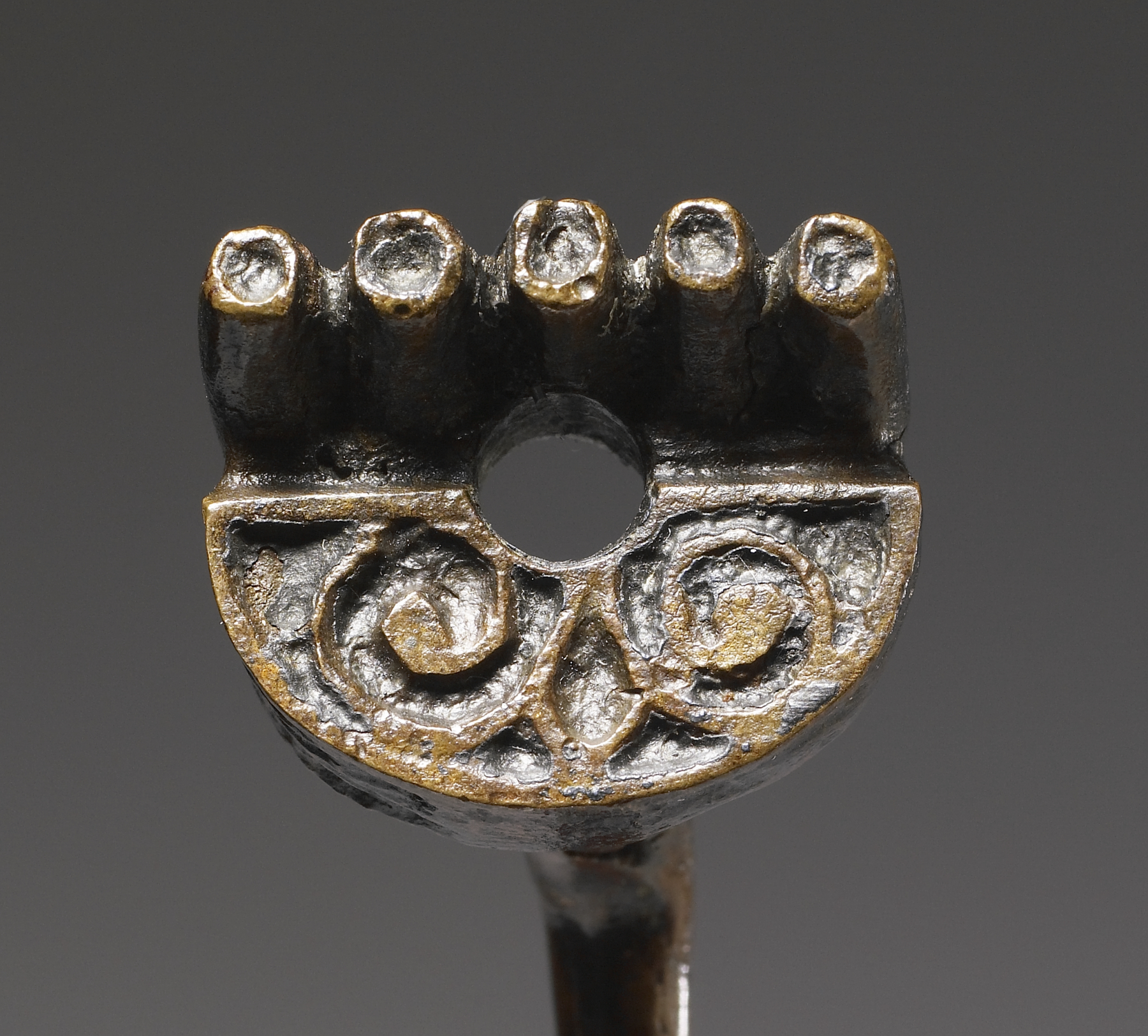Hand-Pin
Called a "hand-pin" because it resembles the palm of the hand with the fingers pointing out at right angles, this pin served as a cloak fastener. Hand-pins were fashionable in Ireland and Scotland in the 6th and 7th centuries. Originally the five pellet "fingertips" along the top of the pin and the sunken background of the spiraling design on its crescent-shaped "palm" were filled with colorful enamel. A tie once passed through the hole in the center of the palm and was wrapped around the tip of the pin to keep it securely in place. The shape of the pin is a creative adaptation of a Romano-British brooch design dating from the 4th century.
Provenance
Provenance (from the French provenir, 'to come from/forth') is the chronology of the ownership, custody, or location of a historical object. Learn more about provenance at the Walters.
Robert Day, Cork: Robert Day Sale, Sotheby, Wilkinson & Hodge, London, May 19-22, 1913, no. 357; Patrick O' Connor, New York; Walters Art Museum, 1950, by purchase.
Exhibitions
| 1979-1980 | Jewelry - Ancient to Modern. The Walters Art Gallery, Baltimore. |
Conservation
| Date | Description | Narrative |
|---|---|---|
| 10/24/1960 | Examination | examined for exhibition |
| 6/15/1985 | Loan Consideration | examined for loan |
Measurements
8 11/16 x 7/8 x 3/4 in. (22 x 2.2 x 1.9 cm)
Credit Line
Museum purchase with funds provided by the S. & A.P. Fund, 1950
Location in Museum
Centre Street: Third Floor: Migration and Early Medieval Art
Accession Number
In libraries, galleries, museums, and archives, an accession number is a unique identifier assigned to each object in the collection.
In libraries, galleries, museums, and archives, an accession number is a unique identifier assigned to each object in the collection.
54.2370




